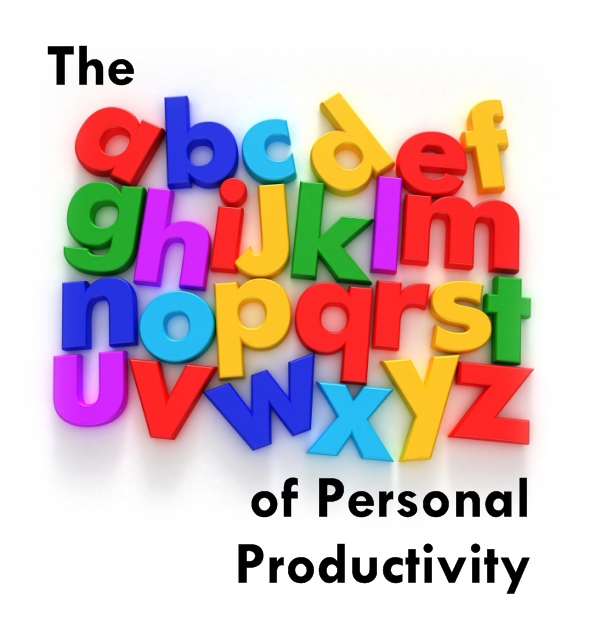O is for Organized.
Are you organized? Or are there little piles of paperwork scattered all around your desk and home? One of the best ways to get more done is to spend less time looking for it, and the only way to do that is to get organized.
You don't have to become a neat-and-tidy freak, aligning your laptop with a ruler so that it's perfectly parallel with the desk edge, but spending a little time working out a filing system will reap rewards when you're blitzing the tasks on your to-do list.
New Stuff Arriving
What happens to all the new things that show up demanding your attention each day? For physical items, like letters, bills, and memos (does anyone use memos any more?) you can't beat the good old-fashioned in-tray. Anything and everything that you need to process should go into the in-tray.
Then, when you have decided it's time to sort through it, you actually look at the items and decide what you're going to do with each one. Hopefully a fair chunk of it will be junk mail that you can put somestraight into recycling. With the rest, decide if you need to do something with it, or just file it for future reference. If there's some action you need to take, then add it to your to-do system and file it in the "stuff you're working on" area. Otherwise, file it in the "things you've dealt with" filing system.
Stuff You're Working On
This is where anything that you'll need as you work through your list of actions lives. Because you'll want to get to it quickly whenever you're working on it, these items should be kept somewhere near your desk (or wherever you'll be doing the work). It could be a few box files that sit on your bookshelf; or some hanging files in your desk pedestal. If you don't have anything appropriate already, head down to your nearest office supplies store and browse through the possibilities.
How you arrange your filing is largely a personal choice, but I suggest breaking it into two or three categories.
If you're working on any big projects, they'll probably involve enough paperwork to warrant a file of their own.
Any remaining items should just be filed alphabetically. You don't necessarily need a separate file for each letter - that will depend upon how many things you end up filing. However you cut it, you want to be able to lay your hands on any item without looking through more than half-a-dozen other things.
The final way of filing works well if you have a lot of date-sensitive items: things that you need to do on a certain day. Get 31 folders and number them one for each day of the month. That way you can file things ready to be acted upon for any day in the next month. Part of your daily review can be to take that day's folder and work through its contents. The empty folder then goes to the back of the stack, ready to accept any items that will need action in a month's time.
Things You've Dealt With
Last, but by no means least, what do you do with items after you've finished any work related to them?
Preferably at this point you can just discard any paperwork (into your recycling of course). However, there are often things that we need to keep in case we need to refer back to it in future.
The two questions to ask yourself when filing something for future reference are: How often am I likely to need to refer to this? And when can I happily throw it away?
The aim here is to make it easy to find the stuff when you're most likely to be looking for it. Are you going to need it regularly? If so then I'd tend towards an alphabetic system, as you'll be able to lay your hands on it as quickly as possible.
If it's something that you're keeping for a set time (the obvious example being any accounting or tax information) then store it based on when it can be thrown away. Then you can easily pull an entire file to ditch when you get to the end of the tax year. Efficient filing isn't just about having a good system for putting things away, it's also about having a good system for getting rid of anything that's outstayed its use.

